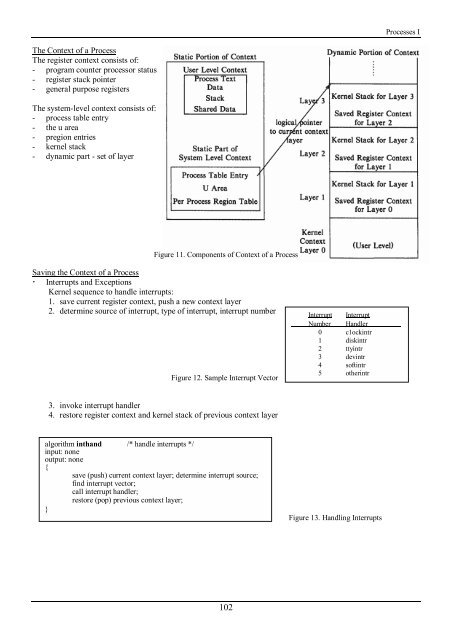Create successful ePaper yourself
Turn your PDF publications into a flip-book with our unique Google optimized e-Paper software.
Processes I<br />
The Context of a Process<br />
The register context consists of:<br />
- program counter processor status<br />
- register stack pointer<br />
- general purpose registers<br />
The system-level context consists of:<br />
- process table entry<br />
- <strong>the</strong> u area<br />
- pregion entries<br />
- kernel stack<br />
- dynamic part - set of layer<br />
Figure 11. Components of Context of a Process<br />
Saving <strong>the</strong> Context of a Process<br />
! Interrupts and Exceptions<br />
Kernel sequence to handle interrupts:<br />
1. save current register context, push a new context layer<br />
2. determine source of interrupt, type of interrupt, interrupt number<br />
Figure 12. Sample Interrupt Vector<br />
Interrupt Interrupt<br />
Number Handler<br />
0 c1ockintr<br />
1 diskintr<br />
2 ttyintr<br />
3 devintr<br />
4 softintr<br />
5 o<strong>the</strong>rintr<br />
3. invoke interrupt handler<br />
4. restore register context and kernel stack of previous context layer<br />
algorithm inthand /* handle interrupts */<br />
input: none<br />
output: none<br />
{<br />
save (push) current context layer; determine interrupt source;<br />
find interrupt vector;<br />
call interrupt handler;<br />
restore (pop) previous context layer;<br />
}<br />
Figure 13. Handling Interrupts<br />
102
















